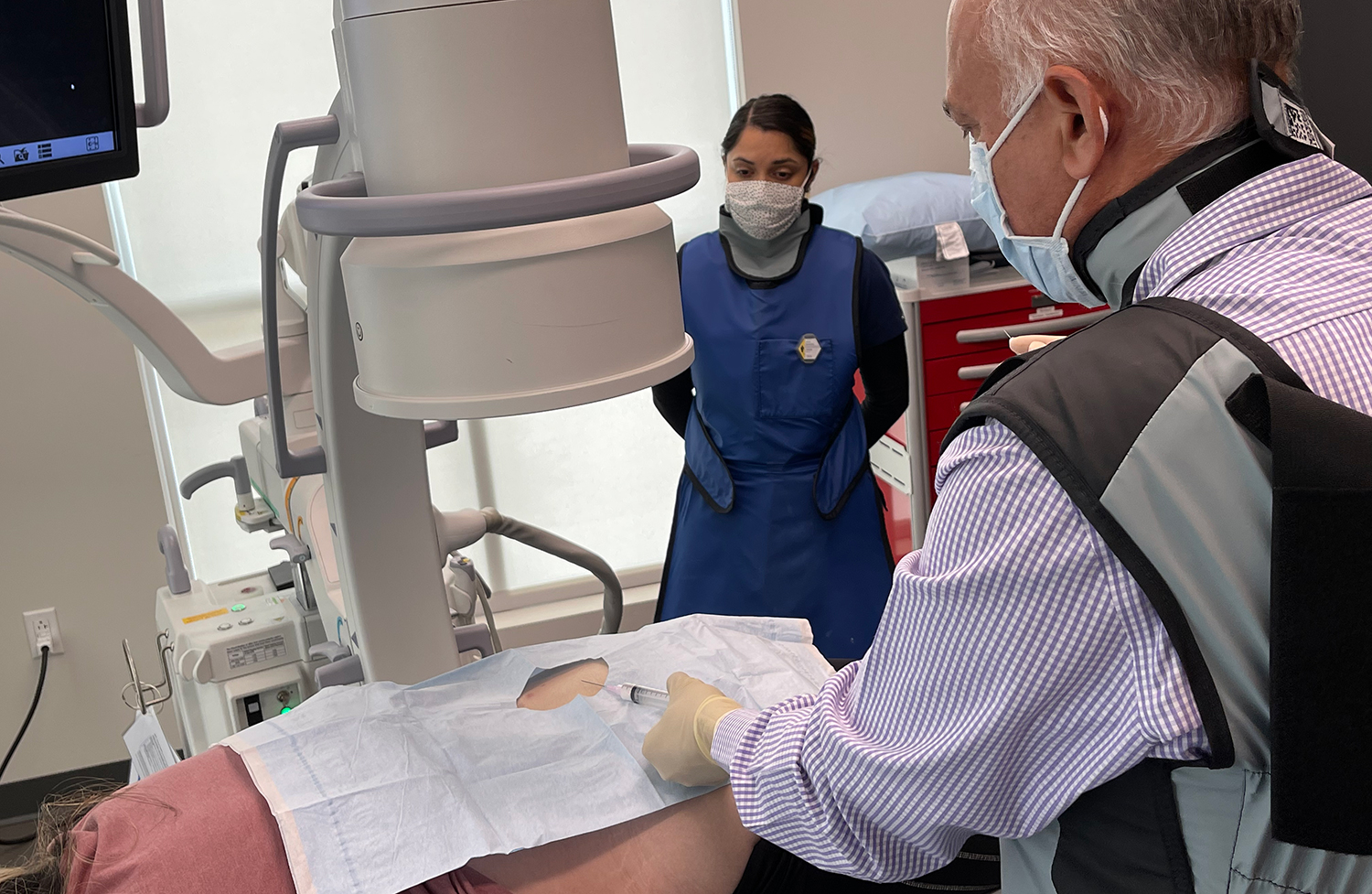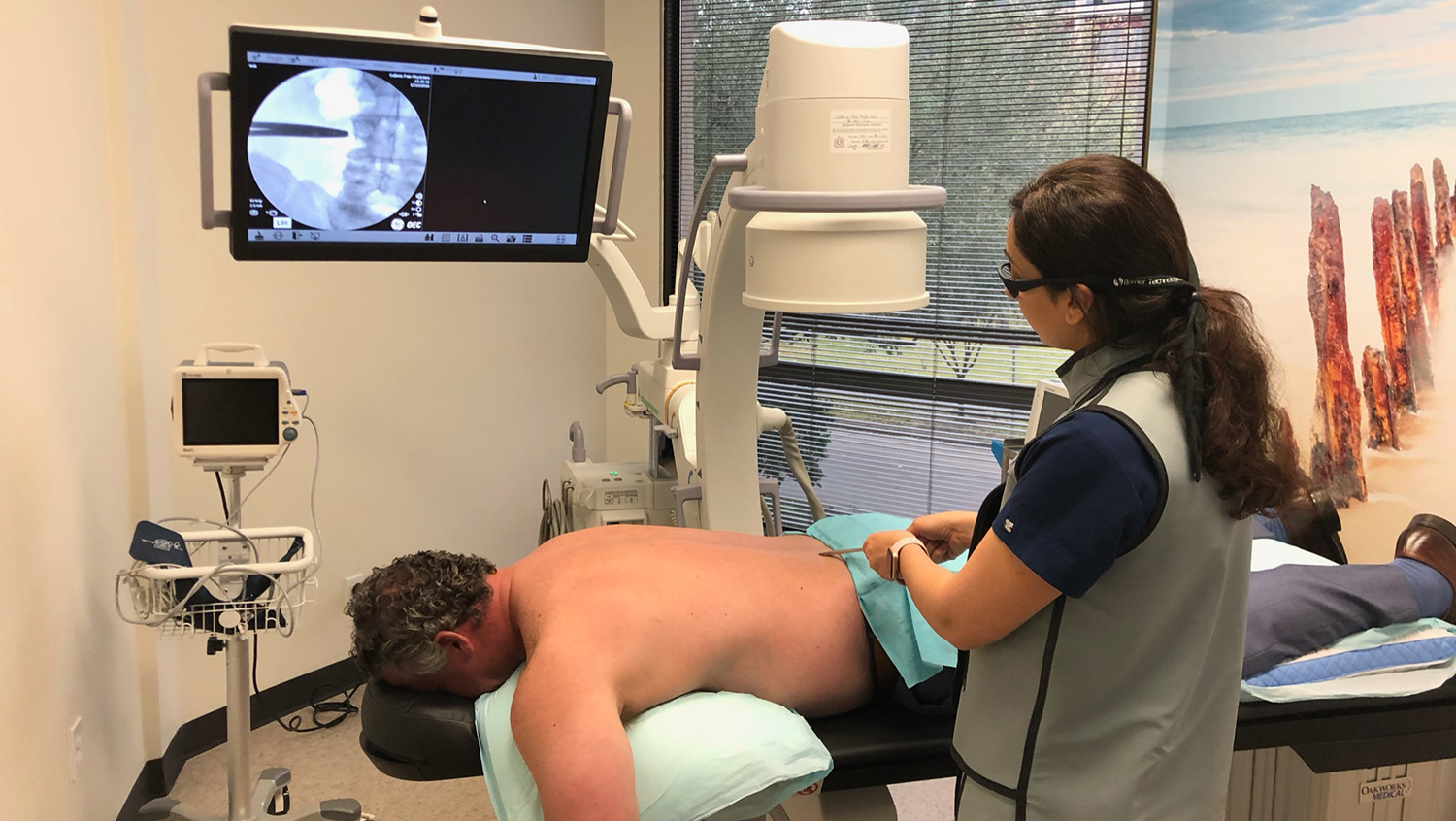
What Are Epidural Steroid Injections?
Epidural steroid injections (ESI) are recommended as effective treatments for a variety of conditions including herniated discs, degenerative disc disease, pinched nerves, and spinal stenosis. ESI can be performed in the cervical region, thoracic region, or lumbar region of the spine by carefully injecting a spinal needle into the epidural space of the spinal canal.
This process occurs using guided fluoroscopic imaging to ensure proper placement of the needle, maximizing the effectiveness of the treatment and reducing the risk of complications. Once the x-ray imaging device confirms that the needle has been properly placed, an anti-inflammatory medication called a steroid is injected to help relieve pain.
Pain relief from epidural steroid injections can last for months or years, depending on the severity of the condition being treated. Repeat treatments within 3 to 6 months after the initial ESI can be safely performed to achieve more relief, provided the first procedure does not help or does not provide complete relief.

What Are Facet Joint Blocks and Injections?
A facet joint block or injection is a spinal procedure used to temporarily numb a small nerve, one that controls the pain coming from the facet joints in the spine. When this occurs, the pain and physical limitation experienced by the patient should significantly improve for the expected duration of the type of numbing medicine used during the procedure.
Patients are encouraged to take notes regarding their relief to give the physician an accurate portrait of the level of relief given from the procedure. Provided the patient gets the expected level of relief, a longer-lasting steroid injection or radiofrequency ablation can be performed. These injections are performed under fluoroscopy (guided X-ray) to properly locate the facet joint and yield the best outcome for the patient.